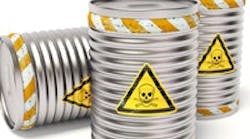On August 9, 2014, Canada published a proposal for adopting the Globally Harmonized System for Classification and Labeling of Chemicals (GHS). GHS compliance is a big issue for just about all manufacturers, and understanding the approach of our neighbor to the north is important. This column summarizes the highlights.
[pullquote]
The proposal aligns current systems for classification, material safety data sheets (MSDS), and labels with the U.S. Occupational Safety and Health Administration (OSHA) Hazard Communications Standard published in 2012 (HCS 2012) and the approaches used in other countries that have similar GHS frameworks. To align with HCS 2012, the proposed GHS would come into force no later than June 1, 2015.
The Canadian Workplace Hazardous Materials Information System (WHMIS), which has been in place since 1988, is implemented at the federal level through the Hazardous Products Act (HPA) and the Controlled Products Regulations (CPR). Suppliers of hazardous chemicals intended for workplace use are required to classify these products and provide hazard information through MSDSs and labels. Under the authority of the amended HPA, Canada would repeal and replace the CPR with a new regulation, the Hazardous Products Regulations (HPR), that would implement GHS. Canada proposes to implement the United Nations (UN) fifth revision of GHS and, to the maximum extent possible, align it with the U.S. HCS 2012. The proposed HPR would also repeal the Ingredient Disclosure List and require amendments to several other regulations.
Key Changes
Canada describes five broad areas where the proposed HPR will differ from the current CPR: a new approach to establishing classification of workplace hazardous chemicals; classification of physical hazards; classification of health hazards; hazard communication; and exemptions. Similar to both the UN model and HCS 2012, classification is based on available data; no testing is required for classification purposes.
The proposal notes that combustible dusts won’t be regulated when shipped in non-dust form, which, when processed, would represent the hazard of combustible dusts. This differs from the U.S. approach to this category. Canada also proposes adding a “Physical Hazards Not Otherwise Classified” (PHNOC) category to capture some hazards not addressed in either the UN model or HCS 2012, including products that undergo vigorous polymerization.
Similar to the approach for physical hazards, health hazards would be an extension of hazards currently covered by the CPR and additional hazards, including specific target organ toxicity, single exposure and aspiration hazard. The proposal also adds “Health Hazards Not Otherwise Classified” (HHNOC) to address elements not covered by GHS and a separate hazard class for Biohazardous Infectious Materials to maintain current CPR worker protection.
Hazard communication would include replacing the term MSDS with safety data sheet (SDS) and a proposed 16-section format with standardized GHS headings. To align with the HCS 2012, Sections 12 to 15 would be optional. The HPR also proposes the disclosure on the SDS of the chemical name and concentration or concentration range of all ingredients that present a health hazard.
The proposal establishes the use of new standardized UN pictograms, hazard statements, signal words, precautionary statements and supplemental label elements. The proposal would allow omission of non-applicable precautionary statements unlike the HCS 2012. The current CPR symbol for biohazards would be retained, but the hatched border around the label would be eliminated. Information provided on the SDS and label must continue to appear in English and French, but revising the SDS every three years in the absence of new information would no longer be required. If new significant information becomes available, the SDS and the label must be updated within 90 days and 180 days, respectively. The seller is expected to transmit in written form the new information and the date upon which it became available to the person who acquires the product; an importer must obtain or prepare such information.
The changes appear to align for the most part with the HCS 2012 and the UN GHS model. Careful review of the proposal is essential.

LYNN BERGESON is Chemical Processing's Regulatory Editor. You can e-mail her at [email protected]Lynn is managing director of Bergeson & Campbell, P.C., a Washington, D.C.-based law firm that concentrates on conventional, biobased, and nanoscale chemical industry issues. She served as chair of the American Bar Association Section of Environment, Energy, and Resources (2005-2006).
Latest from Environmental Health & Safety
Latest from Environmental Health & Safety
